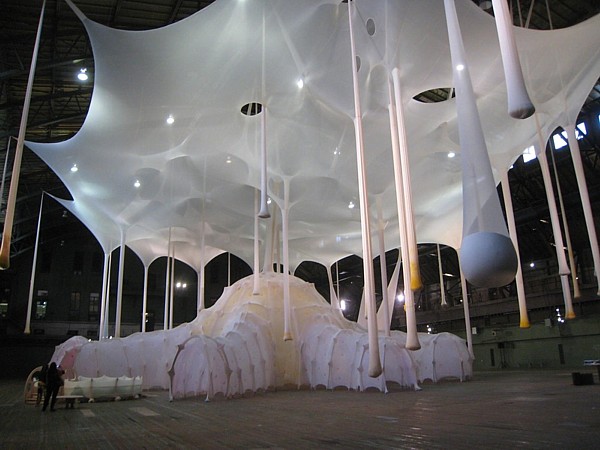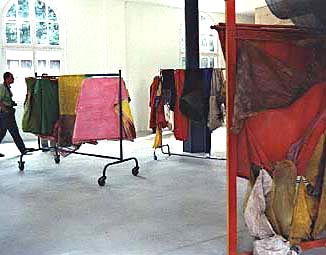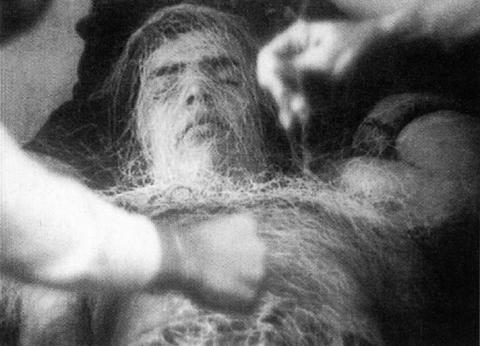
In The Womb of the Tropical Spider
Lycra deployed like tenting, like venting, like pastel parachutes and saliva, forming a gigantic “spider” with udderlike, fabric stalactites weighed down with turmeric, glove, ginger, black pepper, and cumin introduces the hallucinatory feminine into the splendiferous, all-male, historic Park Avenue Armory.
One needs people cautiously making their way through the fabric passageways; one needs children innocently romping to see the danger of this participatory venture.
Brazilian Ernesto Neto’s anthropodino (through June 14), a jaw-dropping marriage of science-fiction and the nursery, is magnificently creepy.
Those of us who know a little about Brazilian art immediately see the references to the nests and participatory environments of Hélio Oticica (1937-1980) and the healing art of Lygia Clark (1920-1988).

Hélio Oticica: Paragoles (1965-79)
Oticica and Clark were co-founders of Neo-Concretism which progressed from Neo-Plasticism, to art variables, to multi-sensory and multi-sensual participatory art. Clark, in particular, was an artist who truly seems to have come from another planet — a genius who has not yet received her due. Some of her healing rituals involved sand-filled fabric tubes placed on various parts of the body.

Lygia Clark: Baba Antropofagica [Cannibalistic Slobber], 1973.
In the meantime, Neto’s vast playpen is a good reminder that there are art worlds within art worlds and fields of “otherness” not yet conquered because we stay too focused on what peaks and speaks (or used to peak) in auction houses.
Forthcoming on Artopia:
Oldenburg at the Whitney, Wednesday, May 20.
The Pictures Generation at the Met, Friday, May 22.
Art Strike Announced, Tuesday, May 26.
Never miss an Artopia installment! For an Automatic Artopia Alert,
contact: perreault@aol.com
